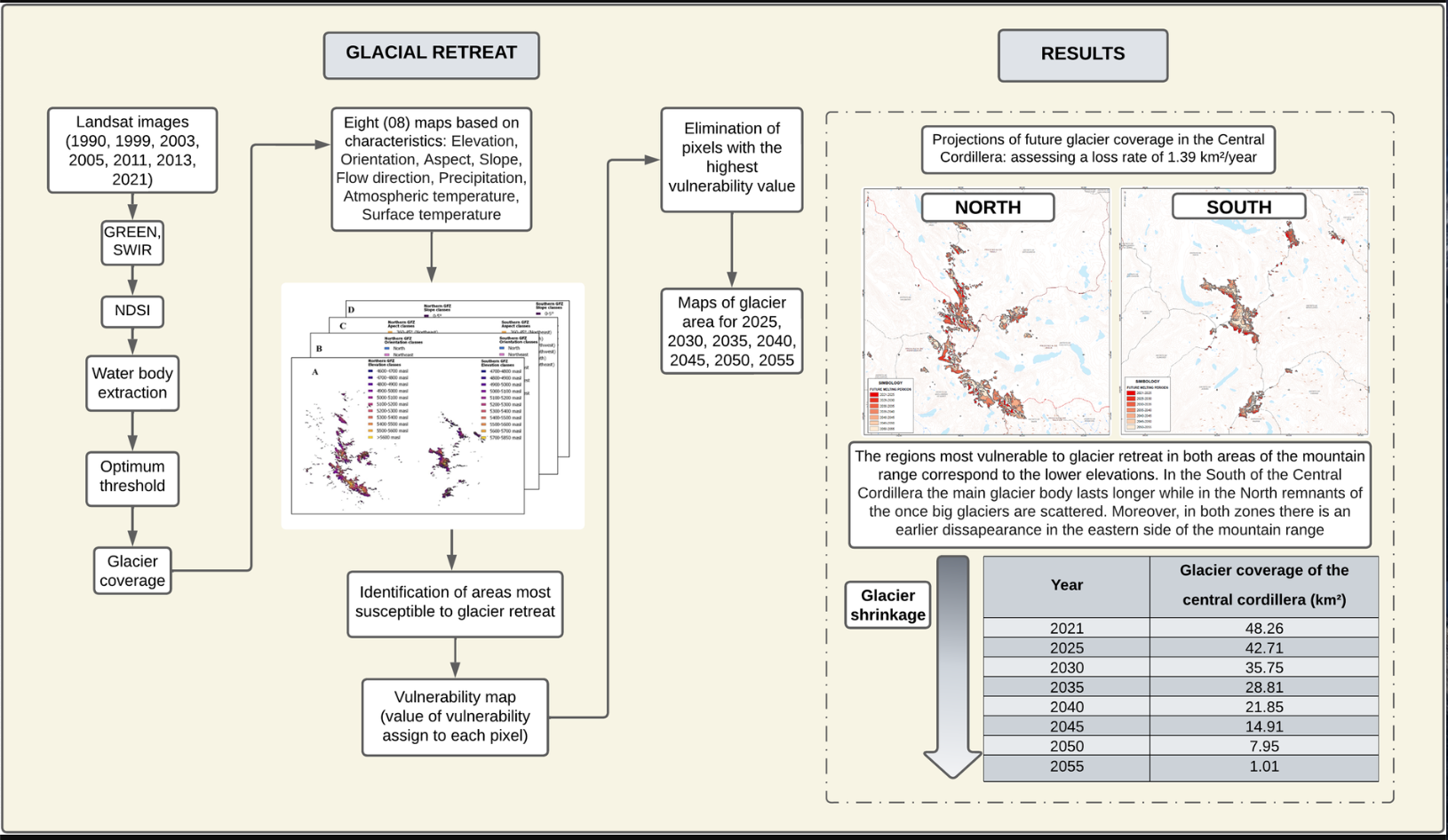
Alonso Arias, Nicolás Núñez, Pedro Rau, Patrick Venail; Development of a spatial projection map of glacial retreat based on vulnerability maps in the Central Cordillera, Peru. Journal of Water and Climate Change 2024; jwc2024151. doi: https://doi.org/10.2166/wcc.2024.151
A Stark Warning of Climate Change’s Impact
In the heart of Peru, the Central Cordillera‘s glaciers are rapidly retreating, presenting an alarming forecast of what lies ahead if global warming continues unchecked. A recent study conducted by Alonso Arias and colleagues from the Centro de Investigación y Tecnología del Agua at Universidad de Ingeniería y Tecnología, Lima, provides a startling projection: a potential loss of 84–98% of these glaciers by the 2050s. This significant research highlights not only the critical vulnerabilities of Peru’s glacial landscapes but also underscores the broader implications for water resources and Andean communities dependent on these ice reserves.
The Study’s Approach
The research team utilized a sophisticated combination of remote sensing data and spatial analysis tools to map and project the retreat of glaciers from 1990 to 2021, extending these projections to 2055. By employing the frequency index and Shannon entropy index model, the study efficiently pinpoints areas most susceptible to rapid glacial retreat. This method allows for a nuanced understanding of how various factors like surface temperature, elevation, and precipitation interact to accelerate glacier melt. The authors of the study are optimistic that this innovative methodology will encourage similar research on other tropical glaciers in the region, enhancing our understanding and response to glacial retreat in comparable environments.
Implications for Water Resources
The implications of this study are profound. Glaciers in the Central Cordillera are a critical source of fresh water for the surrounding regions, supporting agriculture, hydroelectric power production, and daily water use. As these ice masses dwindle, the potential for water scarcity grows, posing a severe risk to food security and local economies. The study’s projections serve as a crucial tool for regional planners and policymakers, who must prepare for the future by adapting water management practices and developing new strategies to mitigate these impacts.
Human Impact and the Need for Action
The results of this study are crucial for policymakers and planners, as they provide a clear visualization of the areas at greatest risk and the potential timeline for change. These maps and data are essential for developing strategies to manage water resources and adapt to changing hydrological conditions that will impact agriculture, hydroelectric power production, and water supply for millions.
For communities in the Andes, the retreat of glaciers isn’t a distant, abstract problem; it’s a current crisis that threatens their way of life. This direct human connection makes the study particularly effective in communicating the urgency of the climate crisis.
Summing Up
The rapid retreat of Peru’s Central Cordillera glaciers is a microcosm of the global environmental challenges posed by climate change. The research by Alonso Arias and his team is more than a scientific study; it is a stark warning and a guide to potential solutions. By understanding the specific factors contributing to glacial retreat and visualizing their impacts through precise mapping, we can better prepare for and respond to the environmental changes that are reshaping our planet.
As readers and global citizens, we are called upon to support sustainable practices, advocate for responsible environmental policies, and educate ourselves and others about the impacts of climate change. The time for action is now—every effort counts in our collective quest to preserve our world for future generations.
Source: Alonso Arias, Nicolás Núñez, Pedro Rau, Patrick Venail; Development of a spatial projection map of glacial retreat based on vulnerability maps in the Central Cordillera, Peru. Journal of Water and Climate Change 2024; jwc2024151. doi: https://doi.org/10.2166/wcc.2024.151
